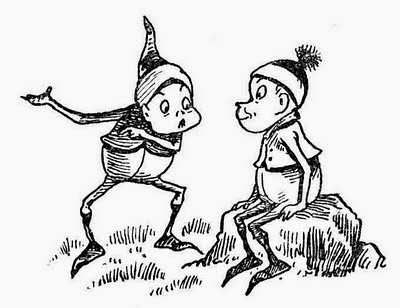I recently completed a writing/photo project for my two
grown boys that you might want to consider for your own family.
It’s no secret that I am getting older. I have quite a few
items, large and small that have either been passed down through the family or
have special memories. Eventually, my children will inherit these items. I wasn’t
confident that they knew the stories behind each of the articles, and I wanted
them to know those stories. I also wanted them to understand which of these objects
has financial value and which ones are just sentimental.
I began by purchasing two photo albums—one for each of my
boys—and filled those albums with pictures of each item that I considered
important. I labeled each photo with a number, then created a key for the
pictures. In the key, I explained everything I knew about the piece, where it
came from, and its significance. I also included family stories where
appropriate.
For Christmas, I gave each of the boys an album along with a notebook filled with the documentation for each picture.
Here are some examples of entries.
Spinning wheel
This hand-made spinning wheel was brought to the United
States from Norway by my mother’s, mother’s mother (your great-great
grandmother), Mathilde Hansdatter Bangsund. She entered the United States two
different times: 1889 and again in 1906. I don’t know for sure which time she
brought the spinning wheel. It appears that she was married when she first
entered the U.S. but she didn’t stay long, leaving in about a year and leaving
her husband behind. Somewhere along the line the two must have been divorced,
because when she came to the U.S. the second time, she married the same man
again. My mother told me that Mathilde also had a loom that was brought from
Norway. In later years, both items were stored in my mother’s mother’s attic.
I don’t know what ever happened to the loom, but since there
was no appreciation for antiques for a long time, it probably wound up at the
dump.
Apparently, my mother had been told at one time that she
could have the spinning wheel. My mother did not always get along with her
mother and my grandmother refused to let my mother have the spinning wheel. Alice
was very upset by this. One Mother’s Day, to console her, my father bought her
a spinning wheel at an antique store. It was a very nice gesture on his part,
but it did not fill the void that my mother felt for the original family piece.
Eventually Grandma conceded and let Mom take the treasured spinning wheel.
#15
China doll
My mother said that relatives in Norway had purchased this
doll to give to her, but never sent it over to the United States; instead, they
sent it when I was born. I understand the hair is human. In 1985 I took the
doll to a store called My Favorite Dolls in Denver. There I was told that the
china doll is an Armand Marsailles #390, made in Germany. At that time, it was
worth about $375.
When I was still a child, I remember I picked the doll up
and all the limbs fell apart. I was horrified. The bands that hold the limbs
together had rotted away. We took all the parts to a doll hospital and they
fixed it just like new.
#71
Ice cream maker
This was one of the
ice cream makers at the cabin and it has many fond memories.
A couple of us kids
would take the row boat over to Walt Bunn’s place and get a block of ice, which
we would place in a large metal washtub on the bottom of the boat. The ice was
cut out of Hungry Jack Lake every winter (sometimes we helped with the work) and
hauled to the ice house that Walt had built into the side of the hill close to
the lake. The blocks of ice would be covered with sawdust and they would last
all the way through the next summer.
Peaches were in
season in August, so my mother would follow the recipe for peach ice cream and
pour the liquid into the center metal container, put in place the wooden
paddles, then fasten it in the green bucket, with the crank in place. We would
use an ice pick to chip away at the ice block until the pieces were just the
right size. The chips were placed around the metal container, alternating
layers with rock salt. Then we would all take turns turning the crank. It was
easy at first when we were mixing the liquid state, but as the ice cream began
to freeze, it was harder and harder to turn the crank. Finally, when it was
very difficult to turn, the bucket was covered with a towel and allowed to sit.
Dinner that night
was always very exciting as we were each given a bowl of the world’s best ice
cream.
In exchange for the
block of ice, Walt Bunn made sure that we also brought him a bowl of the treat.








